Display problem ? Click HERE
Recommended :
- Subscribe FREE - World Pumpv (USA & Europe only)
- Tips on Succession in FREE Subscription
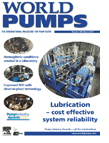
The discussion on pump cavitation have been circulated around what is pump cavitation ? how destructive a cavitation ? how cavitation sound & looks like ? what the relationship between NPSHa & NPSHr ? how to increases NPSHa to minimize / avoid cavitation ?... We understood that a minimum flow shall be maintained to minimize cavitation, avoid impeller damage and extend pump lifespan. "Rule-of-thumb For Minimum Flow Recycle" discussed few factors possibly determining the minimum flow recirculated around centrifugal pump.
- Subscribe FREE - World Pumpv (USA & Europe only)
- Tips on Succession in FREE Subscription
The discussion on pump cavitation have been circulated around what is pump cavitation ? how destructive a cavitation ? how cavitation sound & looks like ? what the relationship between NPSHa & NPSHr ? how to increases NPSHa to minimize / avoid cavitation ?... We understood that a minimum flow shall be maintained to minimize cavitation, avoid impeller damage and extend pump lifespan. "Rule-of-thumb For Minimum Flow Recycle" discussed few factors possibly determining the minimum flow recirculated around centrifugal pump.
What are the Centrifugal Pump Minimum Flow Control Strategies can be considered ?
There are number ways to implement minimum flow protection strategy for centrifugal pump. Typically they are:
(i) A restriction orifice on pump discharge recycle line
(ii) A flow meter on pump discharge with control valve on recycle line
(iii) Use Automatic Recirculation Valves (ARC) valve
(iv) Flow-Delta P and flow meter on pump discharge with control valve on recycle line
Fig. 1 restriction orifice on pump discharge recycle line
Fig. 2 Flow meter on pump discharge with control valve on recycle line
Fig. 3 Automatic Recirculation Valves (ARC) valve
Fig. 4 Flow-Delta P and flow meter on pump discharge with control valve on recycle
Comparison
The following list out the advantages and disadvantages for above four options
Restriction orifices
- Simple installation
- Maintenance free
- Large pump
- Waste energy all time
- Limit maximum pump output.
Orifice plate in the discharge line
- No continuous recycle thus energy saving
- consumes energy and also slightly reduces pump capacity.
- Using orifice plate to measure flow will results high inaccuracy e.g. minimum flow is 40% of maximum flow, 7% of the set point may be expected.
ARC valve
- Simple & effective
- Lack of flexibility.
- Unstable operation
- expensive
Sketches below show outlook and operation of an ARC valve
- Similar to orifice plate option
- Good option for load sharing of pumps in parallel installation
Restriction orifice option is the most common option adopted in many applications with LOW capacity system and a process engineer is advisable to consider this option. However, for HIGH system and appreciable energy losses is possible, a process engineer is advised to consider flow orifice with control valve option. ARC valve may be a good option to consider if process engineer is well aware of the fluid characteristics and familiar with the operation & dynamic of ARC valve. For very high capacity system and load sharing may be expected, process engineer may consider Flow-Delta P option.
Related Topic
- Quick Check Pump Performance Using Motor Data and Field Measure Current
- Is PumpSmart Right Solution for You ?
- Special Flowmeter & Piping Release...
- Vortex Breaker to Avoid Vapor Entrainment
- Estimate Minimum Submergence to Avoid Vapor Entrainment
- Estimate Pump Power Consumption without Vendor Information
- Trim Centrifugal Pump Impeller for Reduced Head
- Quick Check if Pump Performance Curve (Water) is Good for High Viscosity Fluid
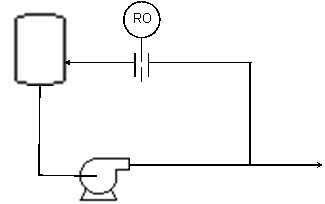
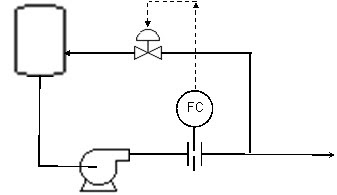
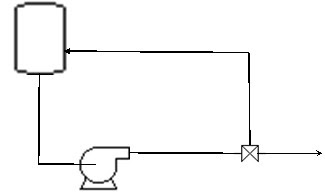
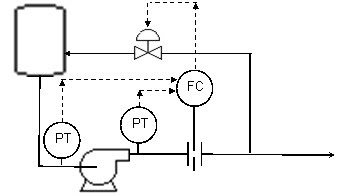
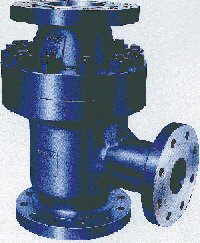
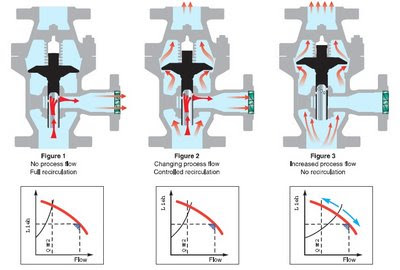
No comments:
Post a Comment